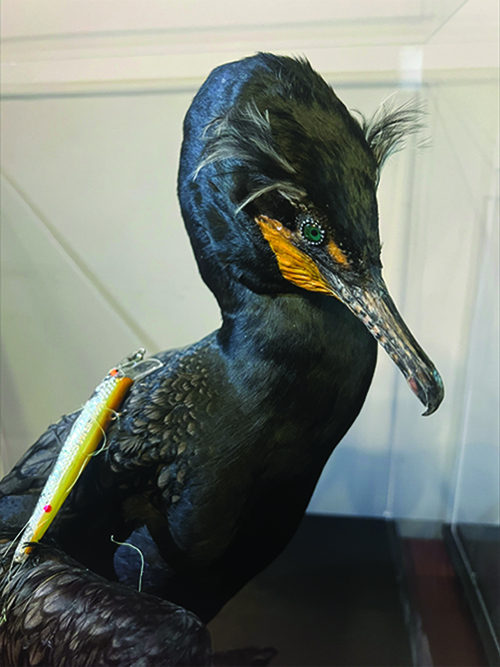Taxidermy Exhibits
By Cambria Wells, Outreach & Education Manager
This Double-crested Cormorant display exhibits the impact human activities can have on wildlife
The reality of working at a wildlife hospital is, despite our best efforts, some animals don’t recover. In these cases, they may be held or necropsied to assist with law enforcement investigations, determine their cause of death, or be preserved for research. This year there is a new possibility – education. With the help of our colleagues at Prey Taxidermy, we can preserve some of our patients and have them returned to us as near-to-life examples of the beauty and vulnerability of the species we serve.
Selecting an animal to preserve is both personal and technical. When selecting animals for our exhibits, we are committed to educating our community by thoughtfully sharing the animals’ stories. We must work with the species regularly to share our experiences with their needs, their personalities, their struggles in Southern California and their unique charms. Finally, we must work with professionals who we can trust to treat them with respect, and who understand the anatomy of the animal well enough to represent them with accuracy.
One goal of our exhibits is to provide a better understanding of our wild neighbors while also starting conversations about coexistence and human impact. Our handsome Double-crested Cormorant is often unknown to people who approach our booth, despite being so commonly close to the shore and on piers in Los Angeles. The hook and line wrapped around his wing tells the story of how we receive so many animals impacted by items humans have left in the environment. Our Peregrine Falcon’s juvenile feathers quietly introduce the vast numbers of animals under two years old that we receive at our facility every year. Each animal has their story as an individual, and as a member of a group or species that we have the power to improve outcomes for every day.
Taxidermy is a complex blend of science and art. At CWC, we know that having our patients preserved in this way brings back a portrait of who they have been, and that our exhibits can help them begin to tell their own stories. If you see the CWC van at an event, come say hi; we have a few friends we’d love to introduce you to.

